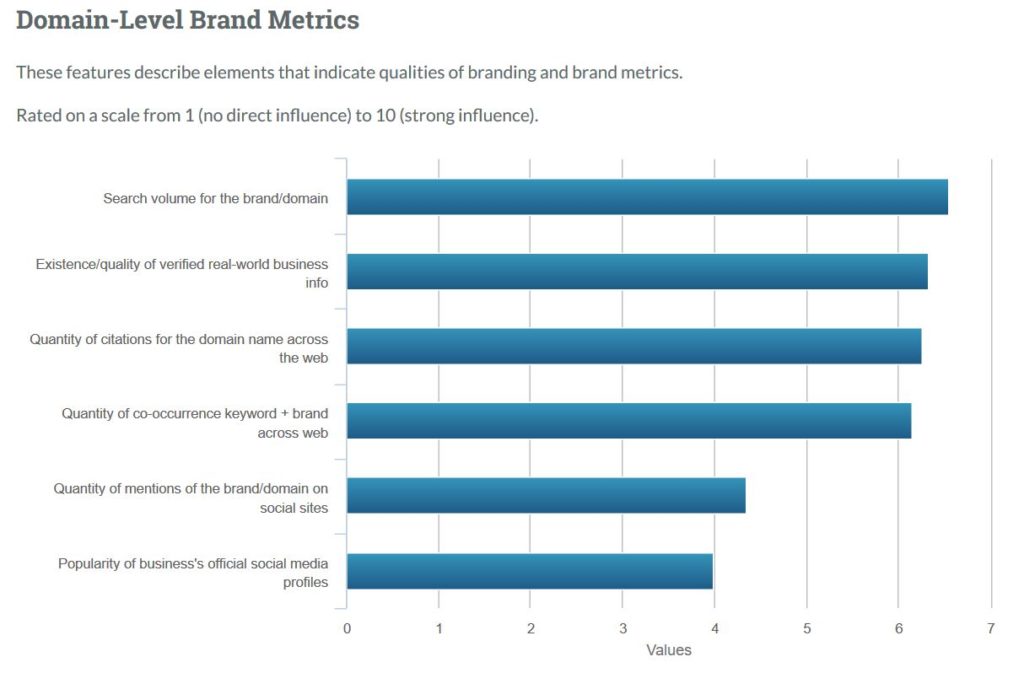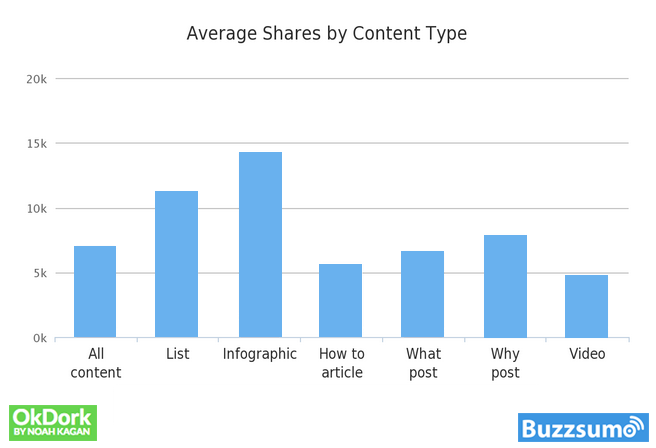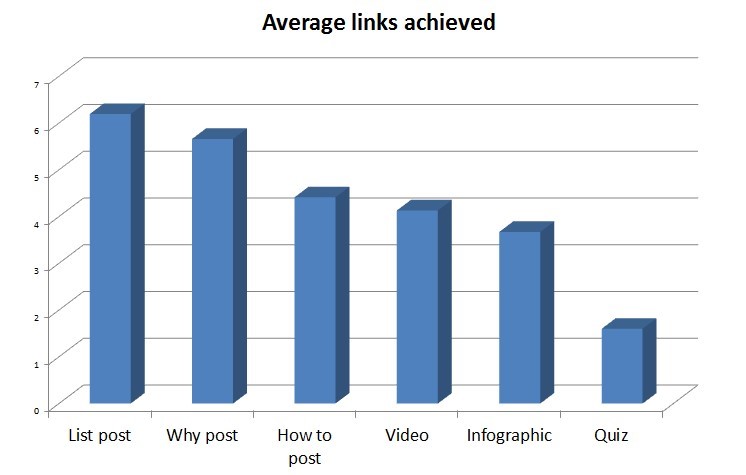In this post I’m going to gift you 11 link building and link earning tactics that will radically boost your online presence.
And the beauty is that I’ve just picked the ones that are really easy to do.
You don’t need to hire a marketing agency to do these.
You just need to get on and do them.
In many ways SEO and gaining links is more a state of mind than a specific set of skills.
Let me explain this.
Have you ever heard someone say to you ‘I’m going to get some SEO done on my site’?
It’s as if SEO were some kind of magical stick that you can wave at a site.
Wrong, wrong, wrong.
The businesses and sites that do well at SEO are those that do not navel gaze.
They look outwards, they network, they attend conferences, they organise events, they support local charities, they sponsor industry get togethers.
They are out there rather than stuck in their offices wondering why the world doesn’t notice them.
And, because they are out there, people talk about them.
And this talk becomes links and…
…you get the picture?
Mahatma Gandhi understood SEO very well. He said:
“You must be the change you want to see in the world.”

You can’t just do SEO to your site. SEO is what you do.
If you are networking, participating and leading you will be creating opportunities to gain links.
- Speak at a conference (you’ll get a link and you can publish your deck on SlideShare to get another).
- Host an event (you’ll get loads of links).
- Enter your business for an award (you’ll get a link and loads more if you win).
- Organise a fundraising event for a charity (you’ll get a valuable not-for-profit link and with a bit of PR a lot more besides).
- Post your organisation’s work on a portfolio style site (you’ll get a link).
When you do things, your SEO gets done.
And that is your first, easy to action, SEO tactic.
See, I said this wasn’t rocket science.
So, now let’s nail 10 others.
For the complete version of this Fast track SEO course head over to Amazon.
You’ll gain access to more than 300 link building tactics and a wealth of SEO knowledge.
And it’s all yours for less than a fiver!
11 SEO link building tactics you don’t need a marketing agency for
If you’ve been following this Fast Track SEO Course you’ve come a long way. (All the previous posts in this series can be found here.)
- You know how search engines work
- You understand how search is changing
- You get keyword research
- You can optimise your site like a pro
- And you’ve grasped why links are so important to your site’s success
You’re almost there!
In relation to off-page optimisation, you may have studied, analysed and interpreted how links may impact the SERPs, but you haven’t found out how to put your knowledge into practice.
And we’re about to put that right.
It’s time to do something with all your knowledge.
This post contains 11 link building tactics for the real world. These are:
- Practical ways you can gain links today.
- Actionable tips that will make a very real difference to your website’s rankings.
- Introductions to the killer tools that will help you nail those links.
This is advice that will help you take the SERPs by storm.
But, let’s lay down some rules of engagement but before you storm the citadel, all guns blazing.
Link diversity is the endgame here
Your aim in this is to secure a variety of links from a variety of sources.
Over-using a tactic is the best route to a penalty.
On the spectrum
Each tactic is classified on the link spectrum, which we introduced in the last post.
A score of 1 is related to hands on, old school link building – don’t ignore these tactics because of this, though.
A score of 5 is pure link earning – look mummy no hands.
Try and mix your spectrum scores to achieve link diversity.
OK. Here are your 11 link buuilding tactics.
- Do domething (On the spectrum: 2 – 5)
See above – your spectrum score depends really on what you do, but when you stir those granules – however you do it – it’s all gravy.
- Testimonials (On the spectrum: 1)
As Bugsy Malone said: you give a little love and it all comes back to you.
Write a glowing testimonial for a supplier, colleague or service/event/product in your area and tell them they can use it on their website.
Here’s the beauty of this:
You don’t even need to push the link angle just make sure in the text you provide it is signed off as:
Your name, your (hyperlinked) company.
Make sure you check their site’s authority first using backlink checker tools, such as Majestic, Moz and Ahrefs.
- Curate content (On the spectrum: 4)
Anything that collects the best out there is curation.
At its simplest level this would be a ‘Best of’ blog post. Something along the lines of ‘The ten most perceptive insights into engineering today’ or ’20 free tools for finding your true love’.
At its most complex this would be an infographic that collected all the data about a subject and then made it easy to visually digest. Something more like ‘How car ownership has changed in the last five years’ or ‘Pizza consumption served up in figures’.
How does this build links?
Curation posts are always useful to users – they tend to share them and link to them.
Having done the work collecting the ‘best there is’ it makes it easy for anyone writing on this area to include your content as a reference point.
And here’s the critical bit: use email outreach to contact everyone whose comments, articles or data you have used. Share your post with them.
Wait.
Human nature says that if you have produced a strong enough curation piece they will link to it: it’s flattering to be included among the best.
And the paraffin that will be tipped on your blazing content. (You will of course only have picked those experts with high DA sites to curate the content from.)
KA-BOOM!
The more you do with your curation to make it unique – the more links and social shares you can expect. You can see examples and get inspiration about content curation here and discover more about creating infographics (without a big budget) here.
So, get creative and don’t forget these handy tools to find great content to curate (Buzzsumo) and to check the authority of sites (Majestic, Moz and Ahrefs).
- Link reclamation (On the spectrum: 3)
A mention (or citation) on a website has some, not inconsiderable, SEO power.
You can read about how mentions and brands are increasingly central to Google here.
Here’s the raw data for such mentions from the Moz survey of SE experts (here): as you can see they are pretty potent factors.

Quantity of mentions for your brand has a 6/10 rating. Trust us, that’s not bad at all.
Yet when you think about it every one of those mentions should be a link, shouldn’t it? You’d certainly be getting more SEO bang for your buck that way.
So, all you need to do is find who mentions you (but doesn’t link to you) and ask them to make the mention a link.
Simple but incredibly effective.
You can find a great outreach email script from Brian Dean here.
And these tools will help you find those mentions: BuzzSumo and Mention.net.
But the big daddy of all these tools is Citation Labs’ Link Prospector.
- Answer questions on Quora (On the spectrum: 3)
The popularity of Q&A sites has given them an online authority that we can’t help but admire. Well, it’s time to set aside those coquettish glances and grab some of that action.
You’re an authority in your field, aren’t you?
So, get out there and answer some questions.
And, naturally, if you cover this on your site anywhere in more depth it would only be exceedingly helpful and useful to include a link.
Hey presto: one high authority site link from an incredibly relevant page.
Who said link building was hard?
Remember this is one amongst many tactics. Keep it sensible, keep your answers relevant and keep you links useful. That’s a polite warning.
Neil Patel writes an incisive guide to the Q&A sites here and you can answer those questions on Quora, Stack Exchange and hundreds of niche Q&A sites.
- Work those influencers (On the spectrum: 4)
What is an influencer? Well the clue is in the name: they are high-profile figures who influence the opinions of many people in their chosen field, sector or niche.
These are the go-to people: if you want to find out the latest on X you go to Y or Z.
Just as an authoritative site’s link to you will mean a lot more than a site that has just launched, so will a mention, link or share from an influencer. It will place your content and business on the radar of many more people than your mum’s glowing testimonial ever can.
- Influencers can amplify your content and online presence.
- They get people talking about you.
- And when people get talking they get linking.
You know what to do if they don’t, right.
Hint: see tactic number 4 ‘Link reclamation’.
We show you just how you can find and identify these valuable people in a moment but, for now, we’ll focus on exactly what you should do with them once you have found them.
And we’re not talking anything too taxing here: you say hello and make yourself known to them.
- Leave comments on their articles.
- Hook up at conferences and events.
- Reply to their tweets.
- Share your latest content with them.
- And even pitch ‘answer’ articles to things they’ve written.
Oh, and don’t forget to include them in your ‘Best Of’ blogs and content curation. (See tactic number 3 ‘Curate Content’ above.)
Your end goal is to get an email address so you can start really working them for links – in the nicest possible way, of course.
This is very much a long-term strategy and not a quick win.
Influencers can provide the perfect springboard for link building but you will not gain access to the diving platform straight away.
Keep plugging and you’ll eventually win their attention and respect.
You’ll find some great tips in these articles:
- How to find and win over influencers
- Discover 14 ways to assess and outreach to influencers
- Tips on including influencers in your content strategy.
Useful tools for assessing who is and is not an influencer include social media monitoring tools, such as Twitalyzer (here), Followerwonk (here), Klout (here), ClearVoice (here) and Social Mention (here).
- Interview your influencers (On the spectrum: 3)
This is, I guess, another way to conduct outreach – but it’s also a great add-on once you have contacted your influencer and are on their radar.
Vanity is not a bad thing at all (especially when it comes to link building). If you can arrange to interview an influencer the likelihood is they will link to and share your piece once it is up online.
KA-CHING.
Of course, because it is an interview with an influencer just a little bit of outreach will bring in quite a few other links too.
DING. DING. DING. DING.
And a follow-on piece analysing what was said and the latest trends in your field could draw in the curation of quotes and opinion from others and…
HALLELUJAH! YOU HAVE ARRIVED IN LINK HEAVEN.
Make sure your interview is available as a podcast, video and is transcribed. This is gold dust: don’t drop any.
Invest in PR too to give this even more legs and get you even more links.
And you don’t have to start at the top – try interviewing any figure with an authority site to test the link waters.
- Charity begins at home (On the spectrum: 2)
Nope, this isn’t about charity events or fundraising as a way to get links. (We have already mentioned this above when we urged you to ‘Just do something’ in tactic number 1).
This is about all those hundreds of links that are right there.
Where?
There. Right under your nose.
Think of all your suppliers, customers, stockists, consultants, partners, organisations that you are a member of, committee groups you sit on.
Gee, just think of all your friends.
Every single one of these could give you a link. They may want a guest post or a testimonial in return. But, all it would take is a phone call or an email and then…
Hey, where have you gone?
Oh, you’re on the phone already.
Make a systematic list of people, businesses and organisations.
If you don’t ask, you rarely get.
- Get yourself on the front page of the internet (On the spectrum: 3)
If your audience is young, slightly geeky, (probably) male and very tech savvy then Reddit – which calls itself, with some justification, the front page of the internet – can give you not only a heap of links but also a massive referral traffic boost too.
Reddit sets content on fire – but to create heat here you need to prepare your logs carefully.
Reddit is a community, and a very well self-policed community that spots and shames anyone looking to take without giving just as quickly as it skyrockets pages that it loves.
Make sure you give some love here too – if you want it all to come back to you: watch your Reddiquette and check out guides for SEO experts to Reddit’s unique ways of operating here and here.
Of course, Reddit is not alone as a tool for promoting your content. Check out Scoop It (here) and Digg (here), along with more traditional social media sites, such as LinkedIn (here), Twitter (here), Facebook (here) and Google+ (here).
- PR doesn’t just stand for PageRank (On the spectrum: 3)
Let’s be clear about one thing: PR (Public Relations) is not link building.
But using PR can help amplify your voice in the same way that using social media can.
And when people are talking about you…
(You know the drill by now.)
PR is all a part of getting you out there – but you need to be building those links on the back of it.
You can explore the reasons why PR is not a substitute for link building here via Gisele Navarro at Neomam Studios and the counter argument that we should ‘stop thinking about links and start thinking about publicity’, from Samuel Scott at Logz.io here.
Helpful tools include HARO (Help A Reporter Out) (here) and Press Release submission sites, such as PRNewsWire.com (here).
- Content marketing – how to create link-worthy content (On the spectrum: 4)
It’s a sunny Sunday and you are off for a relaxing days fishing. You’ve packed some tasty pies and a couple of beers to help the afternoon drift by.
Yet you’ve forgotten any bait for your hook.
You settle just for the beers and use the pies as bait. After all you won’t catch anything without some tasty bait on your hook.
Fishing for links is no different: you are going to need something a lot more tasty than the bare barb of a blog post to reel in those links.

So, what does attract the links?
What content should you be creating if you want to achieve links?
The first thing to point out is that content alone rarely is enough. You need to promote that content.
But, no promotion works if the content itself doesn’t strike a chord.
So, what works?
Buzzsumo is a great tool for analysing social shares, which you can find here.
Of course, social shares and links are not the same thing. Yet, you can get a sense of what types of content gets your audience shifting from a gentle simmer to a rolling boil from them.
What’s more the Buzzsumo crew are quite open about what they have found when analysing countless amounts of content (here and here) and have teamed up with Moz (here) to try and map where the strongest correlations are between shares and links.
Let’s take a look.
In the first of their studies (2014) they found infographics and list posts leading the way.

In a more nuanced study (2015) they discovered four elements that helped a post to go viral. The implication being that the more of these elements you can include the better chance you may have.

In text if it’s easier:
| Emotional element | Content element | Topic element | Format element |
| Amusing | Images | Trending topics | List post |
| Surprising | Facts | Health & fitness | Quiz |
| Heart warming | Charts | Cats & dogs | Story |
| Beautiful | Quotes | Babies | Curation |
| Inspiring | Video | Long life | Research interest |
| Warning | Interaction | Love | Practical tips |
| Shocking |
Surprisingly. when the BuzzSumo boys and girls sat down with Moz (2015) to look at any correlation between links and shares they found the correlation cupboard to be rather bare.
Here’s what they said:
- Across one million posts there was no significant correlation of shares and links: it looks like people share and link for different reasons.
- The content types that do correlate well are research backed content, opinion forming journalism and list posts.
- Entertainment videos and quizzes are far more likely to be shared than linked to.
- List posts and why posts achieve more links than other forms of content on average.
- 85% of text-based content published is less than 1,000 words long. However, long form content of over 1,000 words consistently receives more shares and links than shorter form.
When they analysed only links achieved the scores on the doors for their study with Moz were:

What does this tell you?
Well, the startlingly obvious result is that if you want links you need to have:
- Impeccably well-researched content.
- Presented in an opinion-forming journalistic manner, as a White Paper, list post, why post, how to post, video or infographic.
- And you’d better make it thorough – not just another 300 word, off-the-top-of-your-head blog post.
Different sectors and niches will suit different types of content. Don’t rely on averages find out what works for you, rinse it down and repeat it.
Take a look at those Buzzsumo studies here (2014), here (2015) and here (correlation study) and knock them out with your killer content.
All the previous posts in this series can be found here.
And there’s more to come – we’ll next be looking at Local SEO.
For the complete version of this Fast track SEO course head over to Amazon.
It contains literally hundreds more link building tactics and all you need to grab a slice of Google’s action.
It’s yours for less than a fiver!
So, what are you waiting for?

